The Story – Part 3 (Sombori trip and ‘Coconut beach’)
In the last post, I have told the story of how we went to explore an abandoned lighthouse at the end of the world and a lake that looked like from the Lost World.
As we were sailing among the Sombori archipelago, one could not stop watching with awe the passing emerald hills and sharp rocks rising from the turquoise water. We have been the only boat there, which added to the feeling of lost paradise. At the end of the strait between the jungle islands stood two simplest wooden houses on stilts, far away from the nearest village.
Sombori
The last trip we made was the one I came to Labengki for in the first place. I have been told the nearby island of Sombori offers views similar to Raja Ampat, which I have visited a month before and already missed it. The island of Labengki has already paid off for the difficulties of getting there so now Sombori was just a nice addition for me. As Sombori is somewhat far from Labengki, this was a full day trip and we chartered a boat with a captain from Labengki Kecil. Maybe it slightly resembled a package trip, but the group consisted only of me and Carlos. The trip included several stops in the most interesting places within the Sombori archipelago.
The first stop was on the island of Ambokita that hosted another Bajau village almost entirely built on stilts, where we picked up our guide for the day. The surroundings of the village were simply paradisiac. I cannot stress often enough how beautiful is the turquoise water with small jungle islands growing from it here and there.
We got another chance to witness the simple life of the Bajau on the tiny islets on the coral reef. I imagine it must be worth of an anthropological documentary if you spend a week in such a place. As you can read in The Practicalities, it is entirely possible to stay in a homestay there. We even passed a lonely house on stilts in the middle of a coral reef. I think it was where the ticket for Sombori should have been paid, but nobody was there. They should definitely make a homestay of it it 🙂

The guide took us to a viewpoint on one of the islands (named Kayangan) to be able to fully grasp the wonderful scenery. The untouched feeling of the view could not be spoiled even by a rather insensitive placement of a Hollywood-like sign reading ‘Sombori Islands Sulawesi Tengah’ at the other end of the lagoon. After all, I got used to these kind of signs in Indonesia already.
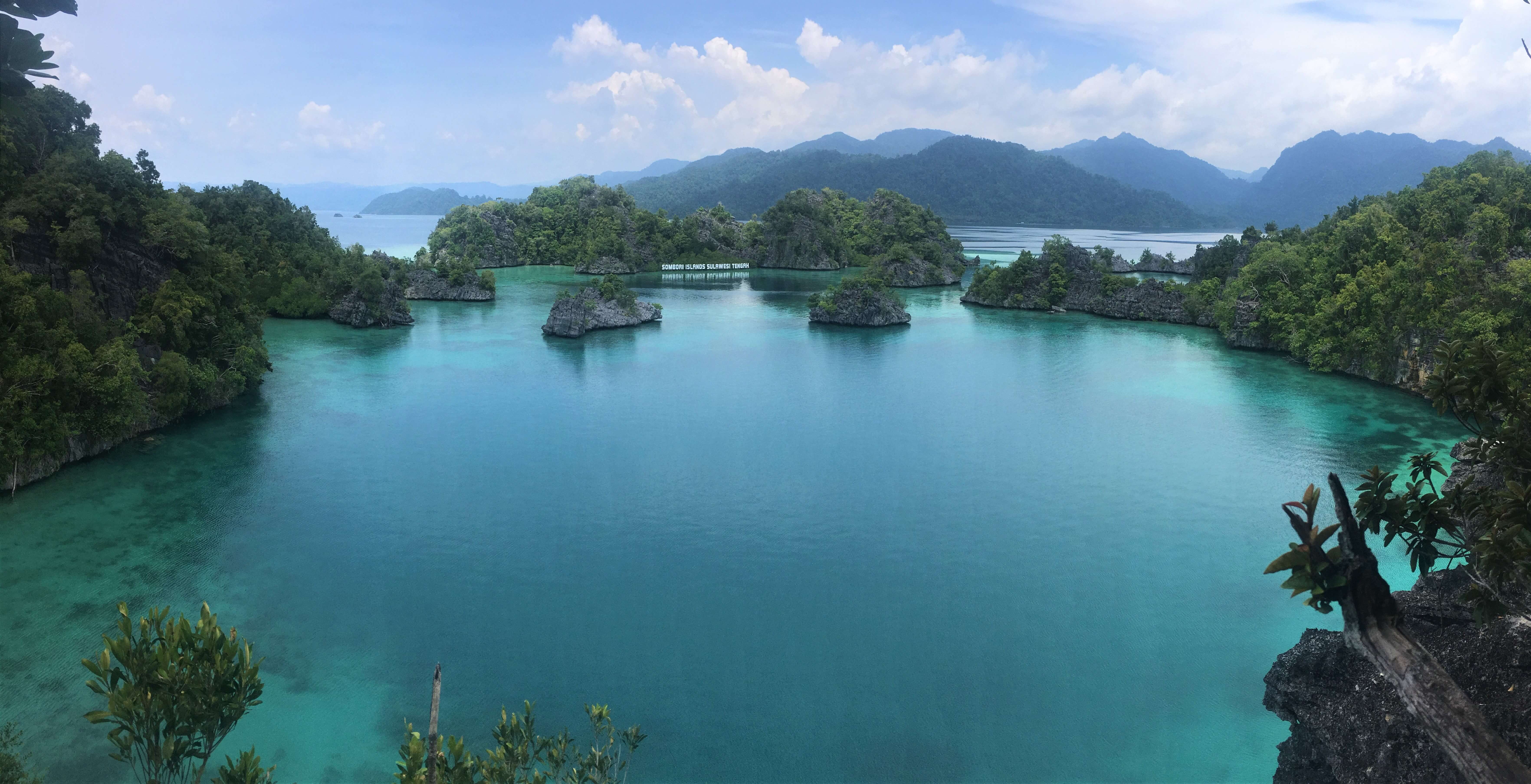

It turns out, the granite the whole archipelago is made of is prone to cave formation, and our next stop was one of such caves.
The darkness of the cave was a nice change to the baking sun outdoors. The cave was quite large and tall, with interesting stalagmites and stalagnites all around. What is more, there was an opening in the cave wall on one side of the cave, through which a thin ray of light protruded inside, which made for some interesting ‘enlightened’ pictures.
The cave was also so full of seashells it made me speculate it might have been a place where prehistoric people used to live. I remember mussels and oysters were one of the first things our ancestors ate and the places where the remains of the shells were disposed of are called middens.
It could have been just my wishful thinking, but it surely added to the feeling of exploration that I enjoy so much.
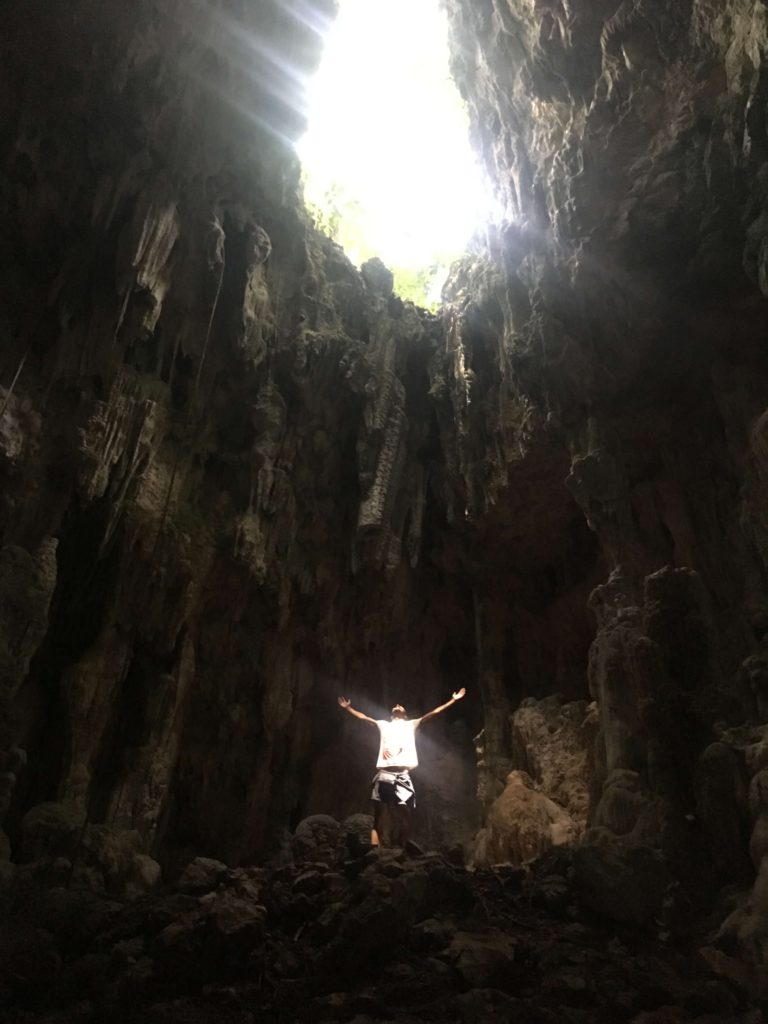
The next stop was unplanned due to another boat engine problem, but at least we got to use our snorkels to look at the underwater world of the archipelago. Compared to some other places in Indonesia, such as Raja Ampat, Banda or Derawan, the corals were unfortunately not in the best shape, but it still felt good to take a dip in the wonderfully inviting water.
Next on the program was a boat ride in between the islands of Sombori and Marege for even more beautiful views of the untouched jungle hills without any human settlements. At the very end, the strait became incredibly narrow. Here, two simple fishermen houses have been built on stilts in the utmost solitude.
https://youtu.be/bCPfl_1RECshttps://youtu.be/d1VSbK9hGH8
One of the houses was called ‘Rumah Nenek’, the Nenek House. There a very old lady has been living with her family, surviving on fishing and selling trinkets to the few tourists passing by. There was a short rain shower just as we have been arriving to the Nenek House, which made the place look even more fresh and magical.
We went for a short snorkeling swim in between the two islands at the narrowest point of the strait. While the coral reef unfortunately seemed quite fished out (I guess the Neneks have a good appetite), there have been some interesting coral formations to check out. After the snorkelling, we had been offered a few pisang goreng (roasted bananas), we donated a few thousand rupiah in return and we sailed out for the long trip back to Labengki, exhausted.
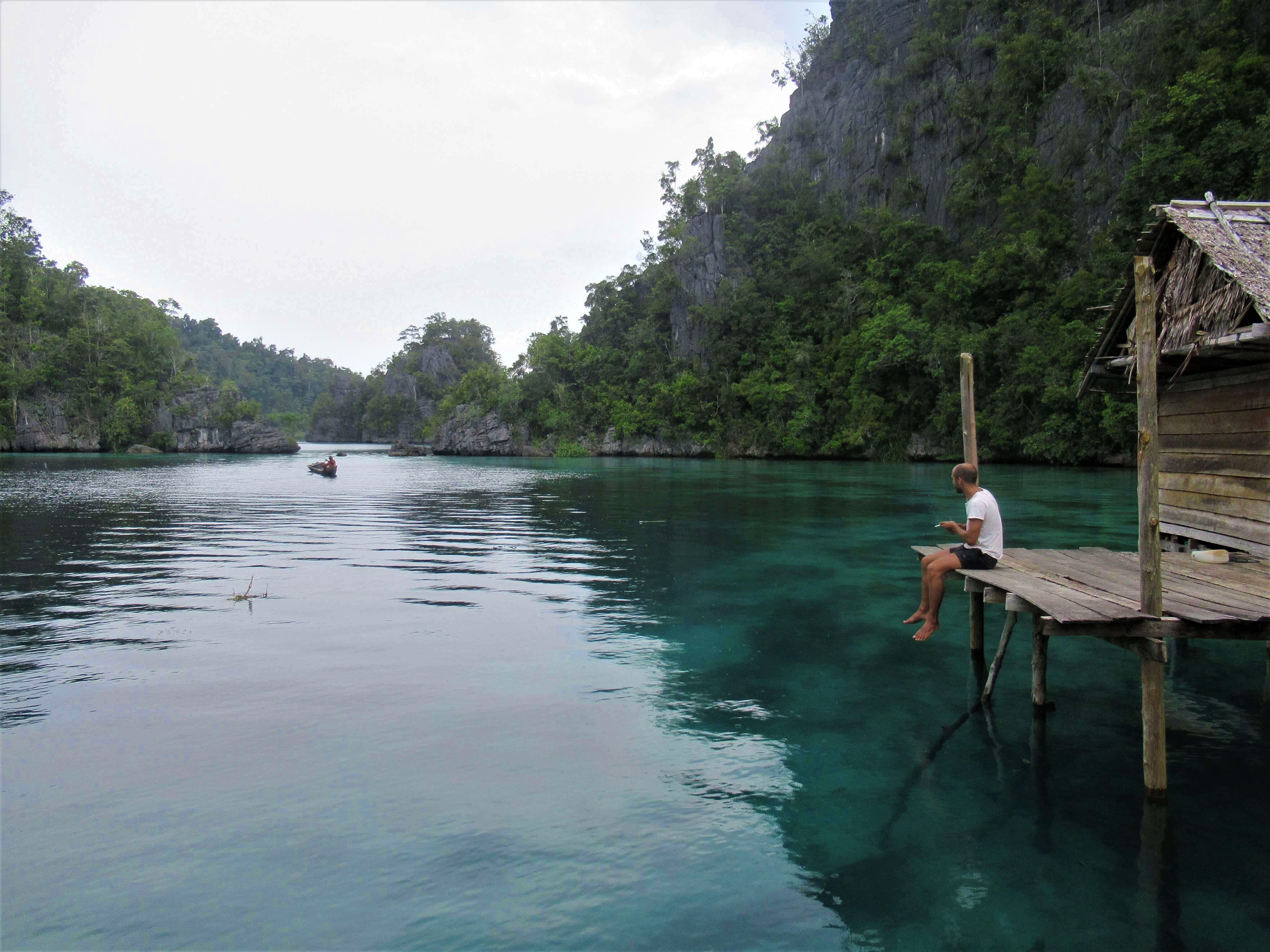
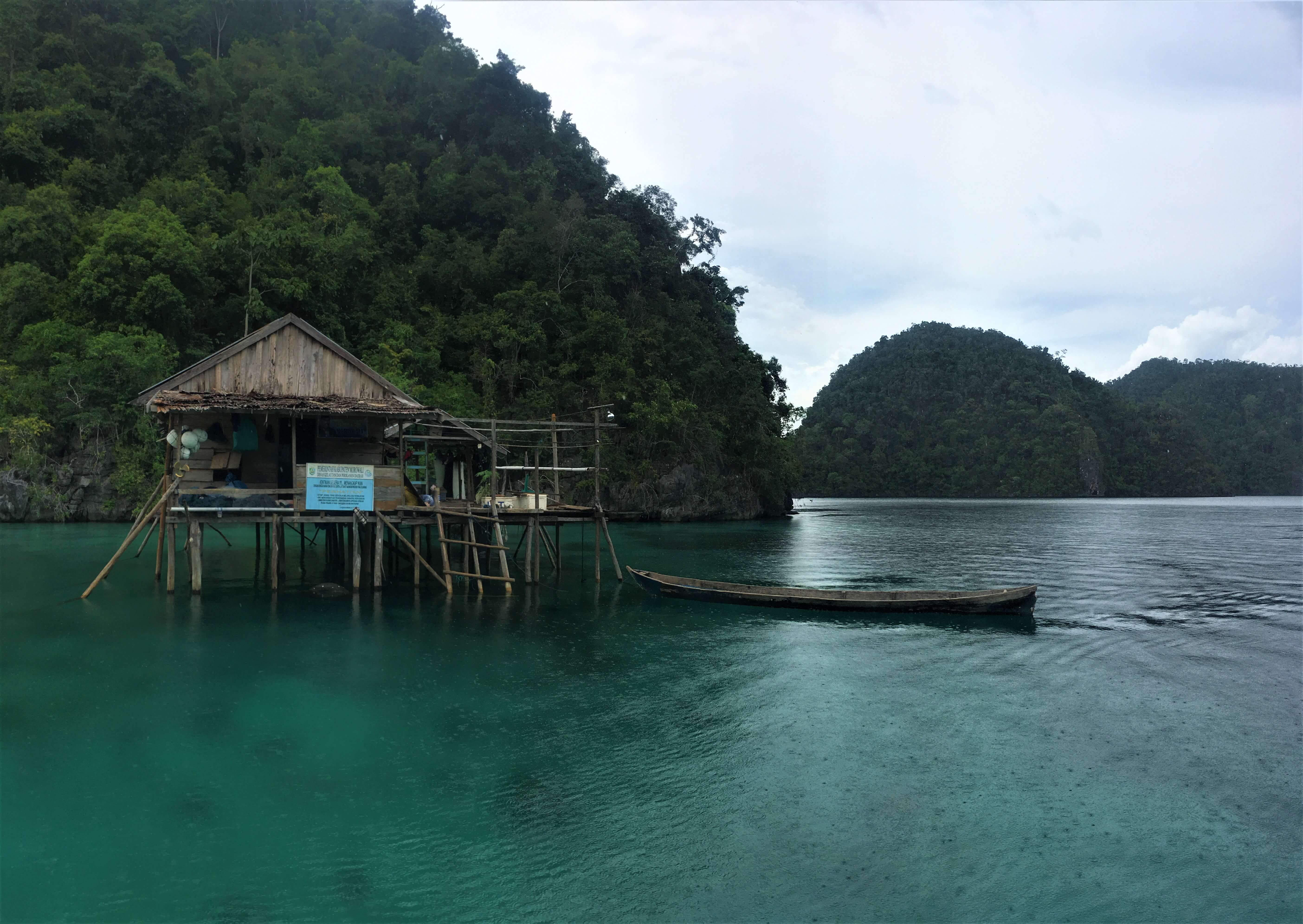
Coconut beach
Besides the trips mentioned above, I spent the days on the island reading a book lying on the hammock, eating wonderful food and snorkeling (which was not on par with other stellar places in Indonesia but still nice).
Me and Carlos even got to explore a beach in the neighboring bay, which could be accessed climbing over a rock cliff. This beach looked even more wonderful than our ‘resident’ beach. It was much longer and lined with hundreds of coconut trees.
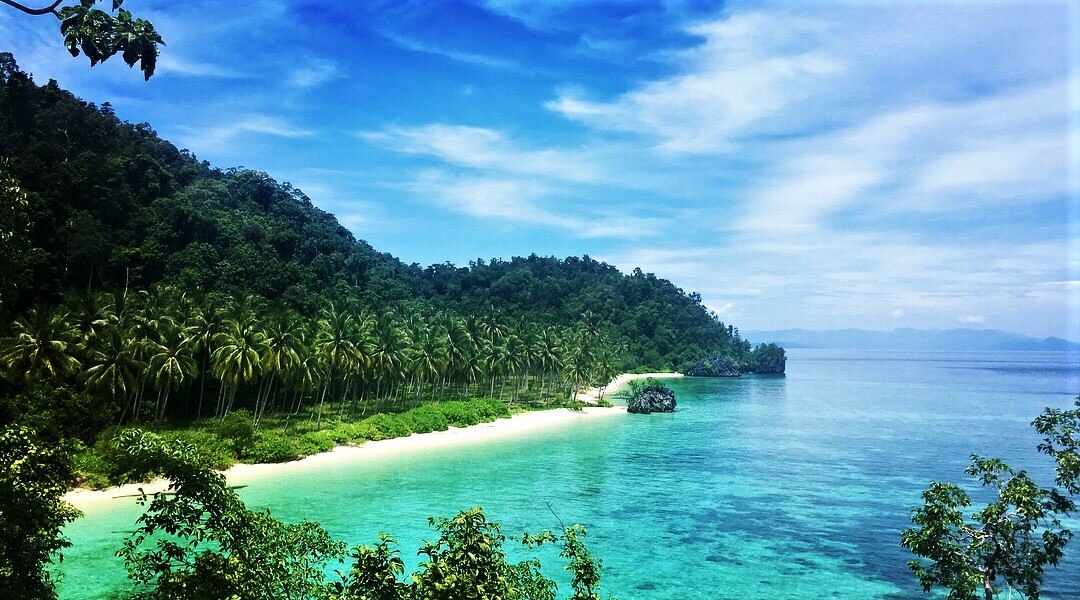
On the beach, we found a feral cat that was probably disposed of here by the villagers and was now living on its own from what it could find to eat. Carlos tried to take it back to the beach huts, but the local dog did not agree, so it has returned to the ‘Coconut beach’.
It was still nice to see her happy when we fed it some coconut water from a fallen coconut. We have been probably lucky with seasonal currents, as there has not been any plastic trash in the water or on the beach. This is unfortunately getting ever rarer in Asia.
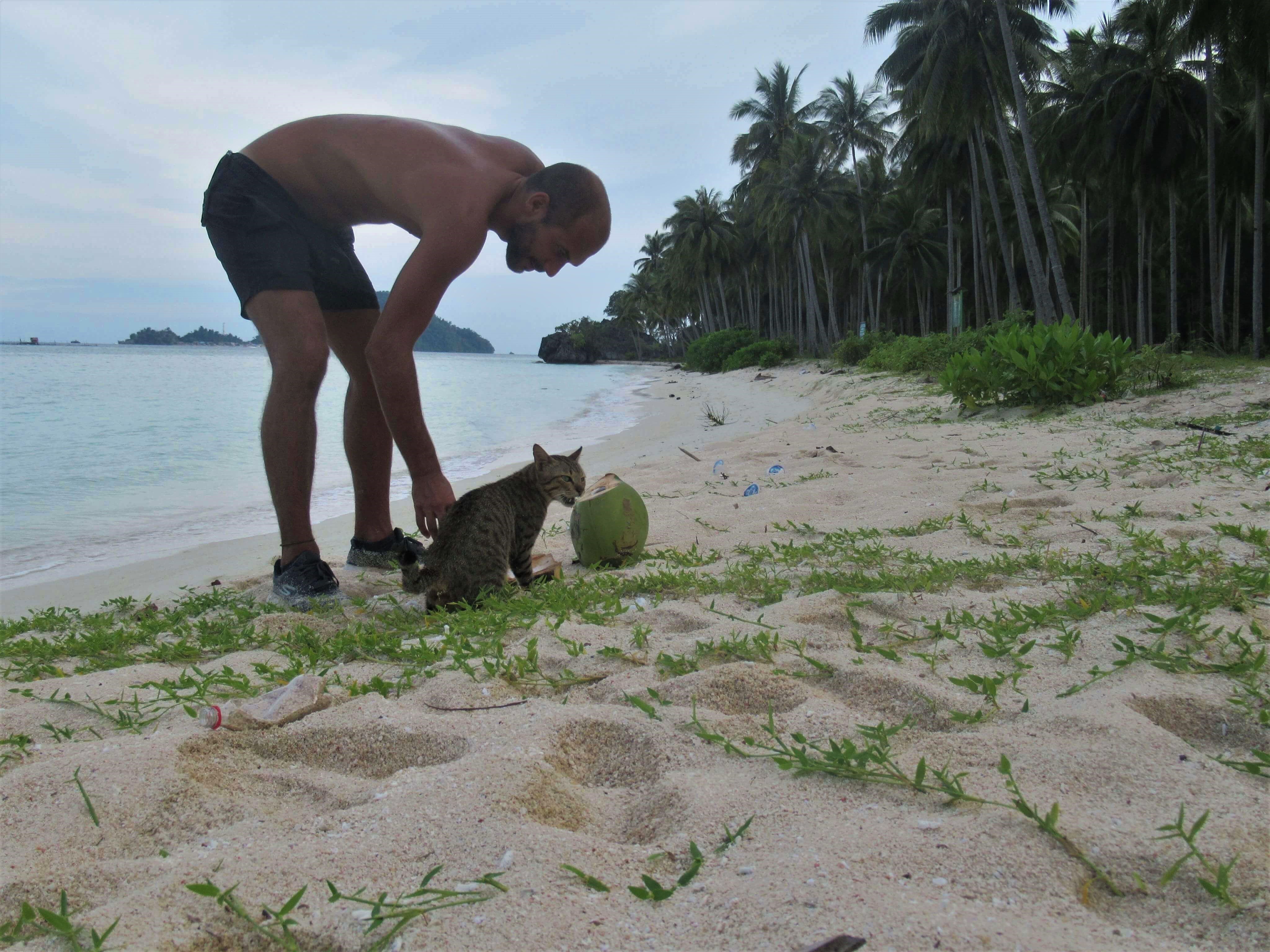
Overall, the week on Labengki was definitely one of the most memorable experiences of my Indonesian adventure. The remoteness of the island, the effort needed to get there off season, the thing that I was able organize the whole stay there despite the difficulties, the mysteriousness and the raw natural beauty of the little touched island and all of the wonderful adventures experienced during the time there meant Labengki will forever have a special place in my memory.
The whole stay on the island there has been just me and Carlos, except for the last few days when we had the company of an Indonesian family from Jakarta. They brought with them a local guide, Saldi, who made me a wonderful video with his drone, where one can perfectly see the full beauty of the place. Actually, the video was later made into a short commercial for Labengki Beach Huts 🙂
Yes, that is me swimming there and yes, it was as paradisiac as it looks like 🙂
We asked the Jakarta family to give us a hitch back to Kendari. From there I flew to Makassar and on to Balikpapan, to begin another wonderful part of my Indonesian trip, along the east coast of Borneo.
The is the last part of the story about my exploration of the Labengki island. For practical information about how to get there, where to stay and how to prepare check out the Practical information post.